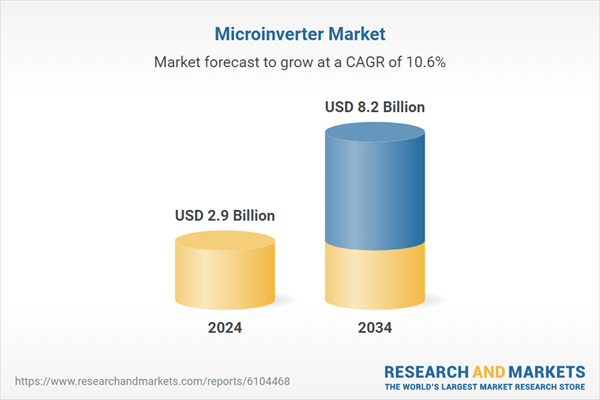As more consumers prefer streamlined solar setups, demand for embedded microinverter technology continues to rise. The increasing need for resilient energy solutions and fast power restoration in outage-prone areas further fuels the adoption of microinverters. Their ability to keep systems partially operational during faults enhances overall grid reliability. Shifts toward smart distributed energy systems also bolster their uptake.
The growing focus on safety, efficiency, and real-time solar energy management is accelerating the integration of module-level power electronics. Microinverters support this trend by offering real-time system diagnostics, faster shutdown capabilities, and higher energy yields. These benefits are particularly vital as regulatory safety standards continue to evolve. The sustained momentum in the residential photovoltaic sector plays a pivotal role in driving market penetration and long-term growth prospects for microinverter solutions.
The three-phase segment in the microinverter market is forecasted to generate USD 800 million by 2034. This growth is driven by expanding commercial and industrial solar deployments that demand greater power handling and reliable energy distribution across all three phases. Rising investments in large-scale solar projects, coupled with an increasing focus on balanced load distribution and advanced grid compatibility, are expected to support the adoption of three-phase systems. Enhanced fault detection and smarter grid communication technologies will also boost the segment’s appeal in industrial applications.
In 2024, the residential segment accounted for a 90.1% share. The surge in demand for highly efficient, user-friendly home solar energy solutions is at the heart of this dominance. As homeowners prioritize system simplicity and safety, microinverters are becoming an integral part of residential solar installations. Their minimal maintenance requirements and improved performance further position them as a preferred choice.
Europe Microinverter Market is expected to register a CAGR of 12.4% through 2034, driven by consistent investment in decentralized solar energy infrastructure and a strong push for carbon neutrality. Supportive grid modernization efforts and policies such as net metering continue to foster the growth of microinverter installations across the region. The increasing focus on energy independence, especially in residential sectors, is projected to enhance product adoption and regional market share.
Major participants in the Global Microinverter Industry include Yotta Energy, Growatt New Energy, SMA Solar Technology, APSystems, Darfon Electronics, Chisageess, Fimer Group, AEconversion, Envertech, Sugrow, Deye Inverter Technology, Shenzhen Sako Solar, LeadSolar Energy, Northern Electric Power Technology, Enphase Energy, TSUNESS, Chilicon Power, Hoymiles, Sparq System, and NingBo Deye Inverter Technology. To strengthen their competitive standing, leading companies in the microinverter space are investing heavily in R&D to develop compact, highly efficient, and grid-compliant inverter technologies.
Manufacturers are rolling out microinverters with enhanced real-time monitoring, faster shutdown features, and higher power handling to meet evolving residential and commercial needs. Strategic alliances with solar panel producers and installation providers enable wider distribution and product bundling. Market players are also expanding into emerging regions where rooftop solar deployment is rising. Some focus on vertical integration to reduce manufacturing costs and gain better control over supply chains.
Comprehensive Market Analysis and Forecast
- Industry trends, key growth drivers, challenges, future opportunities, and regulatory landscape
- Competitive landscape with Porter’s Five Forces and PESTEL analysis
- Market size, segmentation, and regional forecasts
- In-depth company profiles, business strategies, financial insights, and SWOT analysis
This product will be delivered within 2-4 business days.
Table of Contents
COMPANIES MENTIONED
The companies featured in this microinverter market report include:- AEconversion
- APSystems
- Chilicon Power
- Chisageess
- Darfon Electronics
- Deye Inverter Technology
- Dongguan Maywah
- Enphase Energy
- Fimer Group
- Growatt New Energy
- Hoymiles
- Envertech
- LeadSolar Energy
- NingBo Deye Inverter Technology
- Northern Electric Power Technology
- Sensata Technologies
- Shenzhen Sako Solar
- SMA Solar Technology
- Sparq System
- Sugrow
- TSUNESS
- Yotta Energy
Table Information
| Report Attribute | Details |
|---|---|
| No. of Pages | 123 |
| Published | June 2025 |
| Forecast Period | 2024 - 2034 |
| Estimated Market Value ( USD | $ 2.9 Billion |
| Forecasted Market Value ( USD | $ 8.2 Billion |
| Compound Annual Growth Rate | 10.6% |
| Regions Covered | Global |
| No. of Companies Mentioned | 23 |









